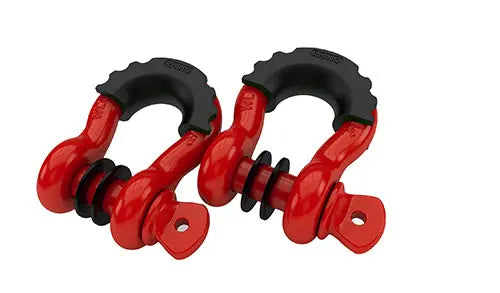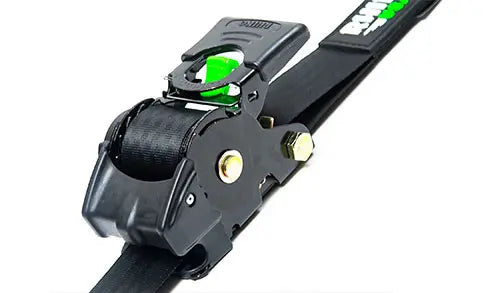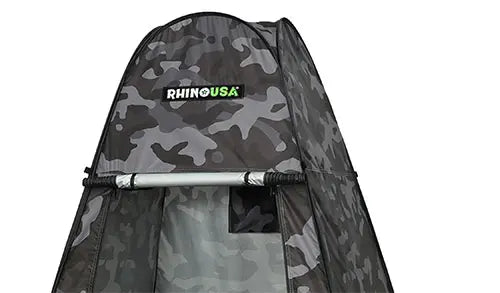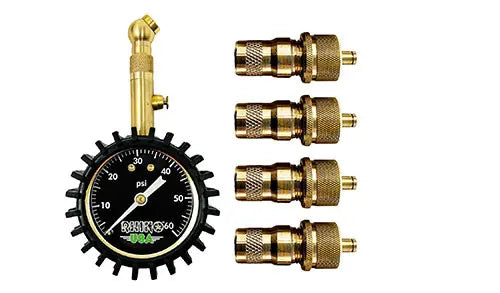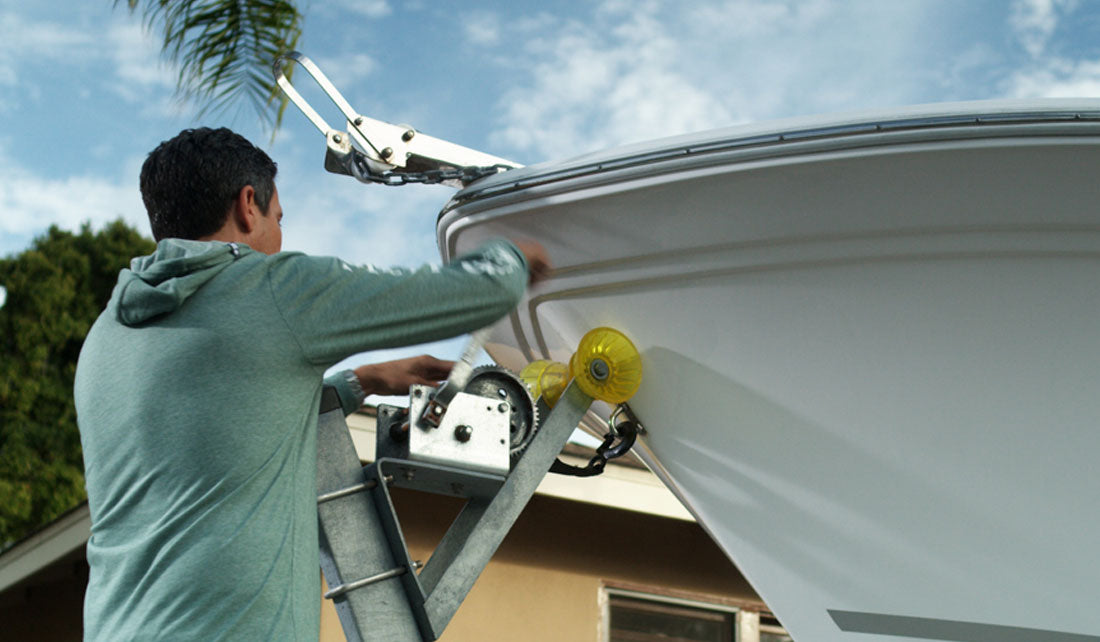Trailer boating by yourself can be an enjoyable and empowering experience, but it requires knowledge, skill, and a touch of patience. Without the proper technique, it's easy for accidents to occur - from damage to your boat or trailer to causing injury to yourself or others. Learning how to adeptly load and unload your boat onto the trailer will equip you with the confidence and expertise to set sail on your own.
In this article, we'll guide you through the most effective ways to trailer your boat solo, addressing the challenges and providing practical solutions. We'll cover essential steps like aligning your trailer, securing your boat, and navigating the launch process, ensuring that once you've mastered these skills, you can independently enjoy your time on the water. So, buckle up and let's embark on your journey to becoming a proficient solo boater.
Understanding Your Equipment
It is crucial to have a solid understanding of your boat trailer and its components before attempting to trailer your boat by yourself. Trailering a boat requires coordination between the boat, trailer, and your vehicle, so becoming familiar with your equipment will ensure a smoother and safer experience.
Boat trailer components:
-
Coupler: This vital component connects the trailer to your vehicle's hitch, allowing for secure towing. Before hitching, ensure that the coupler matches your vehicle's hitch size and takes on an appropriate weight capacity.
-
Trailer lights: Properly functioning trailer lights are essential for visibility and safety while on the road. Check your brake lights, turn signals, and tail lights before each trip to ensure they're fully operational.
-
Safety chains: These crucial components provide a backup connection between your vehicle and the trailer in case the coupler fails. Cross the chains under the tongue to prevent the tongue from hitting the ground if the coupler disconnects.
-
Winch: The winch combined with a heavy-duty winch strap is responsible for pulling your boat onto the trailer and securely holding it in place. Regularly inspect your winch for signs of wear, and replace the strap or cable if needed.
Here are some tips for inspecting your trailer before use:
-
Check tire pressure and condition: Inspect your trailer tires for wear and inflate them (using an accurate tire pressure gauge) to the recommended pressure listed on the sidewall or owner's manual. Low or uneven tire pressure can cause instability while towing.
-
Examine the bunks or rollers: Ensure that your trailer's supports are in good condition and positioned correctly to accommodate your boat's hull shape.
-
Inspect the brakes and suspension: Regularly check your trailer's braking system and suspension components for proper functionality. Address any issues immediately to avoid potential accidents.
-
Lubricate moving parts: Keep all moving parts, such as wheel bearings and winch gears, lubricated to minimize wear and tear and facilitate smoother operation.
Regular maintenance of your boat trailer is essential for safe and efficient trailering. By understanding your equipment, you'll feel more confident and prepared when it's time to load and transport your boat solo.
Preparing Your Boat and Trailer
Before you begin the process of trailering your boat, it's essential to ensure that the boat is properly loaded and balanced on the trailer. A well-balanced boat on a trailer can help prevent swaying, improve fuel efficiency, and reduce stress on the tow vehicle. To achieve a good balance, ensure that the boat's center of gravity is positioned slightly forward of the trailer's axle and that the load is evenly distributed from side to side.
Checking Tire Pressure and Condition: Prior to hitting the road, it is important to inspect the tires on both your tow vehicle and trailer. Check the tire pressure and make sure it is within the recommended range. Also, take the time to assess the overall tire condition for any signs of wear, damage, or cracking. A tire in poor condition may not provide enough traction and could lead to a potential blowout.
Attaching Safety Chains: Connecting safety chains between your tow vehicle and trailer is an essential safety measure. The chains should be crossed beneath the trailer hitch to form an "X" in case the hitch fails. The chains should have enough slack to allow for turning but not so much that they touch the ground.
Connecting Trailer Lights: Once the trailer is properly hitched, connect the wiring harness for the trailer lights to the tow vehicle. This connection is crucial to effectively communicate with other drivers on the road. Ensure that all connections are secure and free from corrosion.
To test the trailer brake lights and turn signals, have someone inside the tow vehicle to operate the controls while you observe the trailer lights. Verify that the brake lights, turn signals, and running lights are working correctly. If any lights are not functioning, double-check the wiring connections and replace bulbs if needed.
By following these steps, you can ensure a safe and hassle-free trailering experience when heading out on the water by yourself.
Backing Up the Trailer
Backing up a boat trailer by yourself might seem intimidating at first, but with practice and some helpful techniques, you'll become proficient in no time. Here are some strategies and tips to help you back up your boat trailer with ease.
1. Mirror Adjustments: Properly positioning your side mirrors is crucial. Adjust them to give you a clear view of the trailer and eliminate any blind spots. This will enable you to keep an eye on the trailer's movement while ensuring that you're not missing any obstacles.
2. Two-hand Steering: When you're backing up the trailer, use both hands on the bottom of the steering wheel. This approach provides more control and accuracy, and it helps you instinctively turn the steering wheel in the correct direction to achieve the desired movement of the trailer.
3. Utilize a Spotter: If you have someone available to assist you, ask them to act as your spotter. They can guide you, helping you avoid obstacles and accurately align the trailer. Make sure to establish clear communication and signals with your spotter.
4. Slow and Steady: Proceed with caution when backing up your trailer. Take your time to make necessary adjustments and maintain control. Patience is essential to ensure accurate and safe maneuvering.
Practice Exercises:
- Set up cones or similarly-sized objects in an empty parking lot, creating a path for your trailer. Practice backing up while navigating through the path. This will help you become more comfortable with the controls and improve your accuracy.
- Practice backing up into a simulated boat ramp or driveway, using cones or makeshift markers to outline the area. The more you practice, the better you will become at maneuvering your trailer.
Common Mistakes to Avoid:
- Oversteering: When backing up, making small adjustments is key. Oversteering can create difficulties in controlling the trailer's movement and result in a frustrating experience.
- Not checking the hitch: Before backing up, ensure that the hitch is securely attached and locked. This will prevent potential accidents or damage to the trailer and towing vehicle.
As you follow these guidelines and practice regularly, you'll become more confident and skilled at backing up your boat trailer independently.
Loading and Unloading Your Boat
Before loading or unloading your boat, it's crucial to position the trailer properly at the boat ramp. Follow these steps to ensure a smooth and efficient process:
-
Back up your vehicle with the trailer attached: Drive slowly and use your side mirrors to align the trailer with the boat ramp. Aim for a straight and centered approach.
-
Submerge the trailer: When in position, back up the trailer into the water until the rear half of the bunks or rollers are submerged. This will help guide your boat easily onto the trailer.
Loading Your Boat: Now that the trailer is submerged and ready, follow this step-by-step process:
-
Approach the trailer: Slowly drive your boat towards the trailer, keeping the bow centered and aligned with the bunks or rollers.
-
Guide the boat onto the trailer: As you come closer, carefully steer the boat to ensure it lines up with the trailer. Once in position, gently apply power to move the boat onto the trailer until it's secure against the bow stop.
-
Secure the boat: Attach the bow strap or winch hook to the eye of your boat and tighten it. It's essential to ensure proper weight distribution and prevent movement during transportation.
Unloading Your Boat: When it's time to get your boat back in the water, follow these steps:
-
Detach bow strap and safety chain: Remove the straps and chains that secure the boat to the trailer. Be cautious not to disconnect support before you're ready to unload.
-
Back the trailer into the water: Slowly reverse your vehicle, submerging the trailer deeper into the water, allowing the boat to float slightly.
-
Release the boat: Gently apply your boat's throttle in reverse, if necessary, to ease it off the trailer and into the water.
Finally, remember to practice proper boat ramp etiquette, such as preparing your boat before entering the ramp and not blocking traffic while loading or unloading. With these tips and steps, you'll be able to safely and efficiently trailer your boat by yourself.
Launching and Retrieving Your Boat
Before attempting to launch or retrieve your boat by yourself, it's crucial to be well-prepared and follow necessary safety precautions. Here's a concise guide to help you efficiently and safely launch and retrieve your boat.
Pre-Launch Checklist:
- Ensure the boat is properly secured to the trailer
- Disconnect the trailer lights to prevent any damage while in the water
- Load all necessary gear into the boat
- Remove the transom tie-down straps
- Check that your boat's drain plug is secure
When you're ready to launch your boat, follow these key steps:
-
Position your vehicle: Carefully back up your vehicle, ensuring your boat and trailer are aligned with the ramp.
-
Prep the boat: Shift your boat into neutral, and make sure the motor is raised.
-
Release the boat: Gently release the boat from the trailer and slowly pull the vehicle forward until the boat floats off the trailer. Do not accelerate quickly to avoid damaging the boat or trailer.
-
Secure the boat: Use a long bow line to secure your boat to the dock as you park your vehicle.
Once you've enjoyed your time on the water and are ready to retrieve your boat, follow these steps:
-
Align the boat and trailer: Slowly approach the ramp and align your boat with the submerged trailer, making sure the boat's bow is pointed directly toward the trailer.
-
Load the boat: Carefully drive or powerload your boat onto the trailer until the bow eye comes into contact with the bow stop.
-
Secure the boat: Attach the winch strap to the bow eye and tighten it. Once tightly secured, attach the safety chain and transom tie-down straps to hold the boat in place.
-
Pull out of the water: Slowly drive the vehicle up the ramp, adjusting as needed to keep the boat and trailer aligned.
Post-Retrieval Checklist:
- Inspect the boat and trailer for any damages
- Remove any standing water or debris from the boat
- Replace the boat's drain plug
- Reattach the trailer lights and check their function
- Store all gear and equipment
By following these guidelines and checklists, you can confidently and safely launch and retrieve your boat by yourself.
Safety Considerations
Trailering a boat by yourself could be a challenging task, but following safety guidelines ensures a smooth and accident-free experience. Ignoring these precautions may lead to risks such as damaging your boat, vehicle, or trailer, or even causing road accidents and injury to yourself or others.
First, it's essential to understand the weight limits and towing capacity of your vehicle and trailer. Check the owner’s manual for the maximum weight your vehicle can safely tow, as well as the maximum weight capacity of the trailer. Overloading can result in loss of control or damage to the towing vehicle's suspension, brakes, or transmission.
To stay safe while maneuvering the trailer, follow these key tips:
-
Hitch inspection: Prior to hitting the road, ensure that the truck and trailer are properly mated, the light plug and hitch are secure, and the safety pin and latch are in place.
-
Safety cables or chains: Cross the safety chains or cables when connecting the trailer to the vehicle and ensure that they are secured.
-
Light connections: Verify that the electrical cord is connected to the vehicle and functioning correctly.
-
Secure the boat to the trailer: Check that the safety straps and chains are fastened properly to secure the bow and stern.
When on the road, consider these important precautions:
-
Wide turns: Avoid hugging the inside of a turn, as the extra length and width of the trailer needs more space to maneuver.
-
Leave extra following room: The additional weight increases your stopping distance significantly, so maintain a larger gap between you and the vehicle in front.
-
Handling wind-blast: If wind-blast pushes your rig sideways, ease off the accelerator but avoid stepping on the brakes to reduce its effect.
By adhering to these safety considerations and handling your boat and trailer with care, you can ensure a successful and safe trailering experience.
Troubleshooting Common Issues
Trailer sway, flat tires, and boat ramp challenges are all common issues that can arise when trailering a boat by yourself. In this section, we will provide you with some tips to deal with these problems.
Trailer Sway
Trailer sway is a dangerous situation that can lead to loss of control of your vehicle. To prevent and handle this issue, follow these steps:
-
Check your load distribution: Make sure the weight of the boat is evenly distributed across the trailer, with approximately 60% of the weight in front of the axle.
-
Ensure proper hitching: Verify that your tow hitch is properly connected and secure. A loose hitch can cause the trailer to sway.
-
Use sway-control devices: Consider installing anti-sway bars or a weight-distribution hitch to help minimize trailer sway.
Flat Tires and Mechanical Issues
Dealing with a flat tire or a mechanical problem on your trailer does not have to be overwhelming:
-
Prepare beforehand: Familiarize yourself with the operation of your jack, lug wrench, and spare tire before setting out on the road.
-
Keep a toolkit: Carry a well-stocked toolkit including pliers, wrenches, and screwdrivers to handle minor repairs.
-
Contact roadside assistance: If you are unable to resolve the issue yourself, do not hesitate to call for roadside assistance or a tow truck.
Overcoming Challenges at the Boat Ramp
Launching or retrieving your boat at the boat ramp can be daunting, especially if you are on your own. Here are a few tips to make the process smoother:
-
Practice: Get familiar with your boat and trailer in an empty, open space before trying it at a busy boat ramp.
-
Arrive prepared: Secure safety straps, remove transom straps, and prep your boat before backing into the ramp.
-
Take your time: Going slow and steady will not only make things easier for you but will also prevent accidents or damage to your boat or trailer.
-
Ask for help if needed: It's okay to ask other boaters for assistance or guidance when facing difficulties at the boat ramp.
Conclusion
In summary, trailering a boat by yourself involves several key steps and techniques. Remember to prepare your boat beforehand, inspect the ramp, and carefully position your vehicle and trailer. To ease the process, you may consider using a long rope and other helpful tools like TrickStep. Once everything is set up, slowly and meticulously drive the boat onto the trailer, ensuring it remains straight.
It's important to practice these techniques regularly to become more confident and proficient in trailering your boat solo. Safety is paramount while executing these steps, so never rush the process and always stay vigilant. By becoming adept at trailering your boat by yourself, you can ensure a more enjoyable and successful boating experience. Happy boating!

